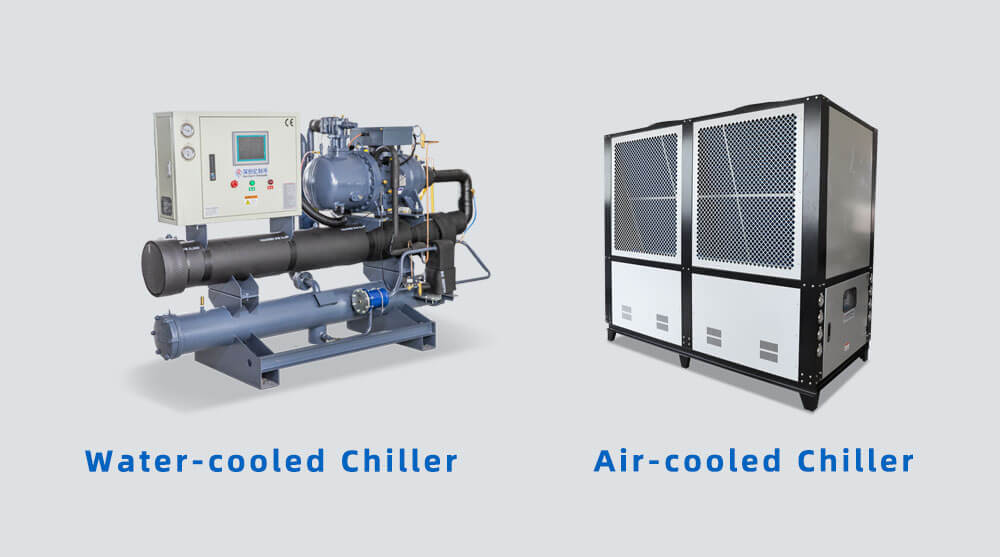What is (US)RT?
The term (US)RT or Refrigeration Ton, predominantly used in North America, is a unit of measurement for the cooling capacity of a refrigeration system. Contrary to what the term might suggest, it has no bearing on the weight of the equipment. Instead, it pertains exclusively to the quantity of cooling the system can deliver.
Refrigeration Ton has some variants and is often abbreviated to RT. While this measurement unit was widely used in many countries previously, the global shift has leaned towards the SI metric units of kilowatts (kW) for cooling capacity. Nonetheless, some individuals and manufacturers continue to refer to equipment ratings in refrigeration tons.
For those located outside North America, it’s not uncommon to find older refrigeration equipment still rated in refrigeration tons. Within North America, large-scale refrigeration plants, such as chillers, are often quantified in refrigeration tons, while smaller units are typically rated in British Thermal Units (BTUs).
Chiller Cooling Capacity Unit Converting Chart
kcal/h | BTU/h | USRT | w | |
1 kcal/h | / | 3.968 | 0.00033069 | 1.163 |
1 BTU/h | 0.252 | / | 0.00008333 | 0.2931 |
1 USRT | 3024 | 12000 | / | 3517 |
1 w | 0.8598 | 3.412 | 0.00028434 | / |
Chiller Capacity Conversion Calculator
BTU to tons calculator/ tons to BTU calculator
What is BTU?
The abbreviation BTU stands for British Thermal Unit, a traditional unit of energy measurement. It represents the quantity of heat necessary to elevate the temperature of a single pound of water by one degree Fahrenheit. Though this unit finds its application across various industries, its predominant usage lies within power generation, heating, and the air conditioning sectors.
In the context of chillers, especially those of smaller capacities, the BTU measurement plays a significant role. The cooling capacity of these chillers is often quantified in terms of “BTUs per hour.” This metric refers to the chiller’s ability to extract a specific quantity of heat from a system within an hour. As such, BTUs serve as an essential parameter in a myriad of energy calculations and management strategies, most notably in HVAC and refrigeration systems.
What is Kcal?
The term “Kcal” stands for kilocalorie, a unit that represents the amount of heat required to raise the temperature of one kilogram of water by one degree Celsius. Notably, one kilocalorie per hour (abbreviated as Kcal/h) symbolizes the energy equivalent to one kilocalorie being expended over the duration of one hour. This unit is often used to measure the heat output of a heating or cooling system. In mathematical expressions, a slash (“/”) is utilized to indicate division between units.
What is kW?
The term “kilowatt” (kW) represents a unit of power within the International System of Units (SI). It quantifies the rate of energy consumption or conversion, with one kilowatt being equivalent to 1,000 watts (W). This conversion allows for easy calculation: divide the number of watts by 1,000 to yield the corresponding power in kilowatts.
In other words: 1,000W = 1 kW
Furthermore, “kilowatt-hour” (kWh) is a unit of energy that encapsulates the quantity of energy used by an appliance rated at one kilowatt operating continuously for one hour. For instance, utilizing a 1,000-watt vacuum cleaner for an hour will expend 1 kWh of energy. This is a crucial metric for understanding energy use and efficiency, particularly in applications such as residential and commercial appliances, machinery, and heating, ventilation, and air conditioning (HVAC) systems.
How To Choose The Right Chiller Capacity?

1. Air-Cooled vs. Water-Cooled Chillers
Air-cooled chillers function by utilizing a condenser similar to those found in automobiles. A fan propels air through the refrigerant coil, facilitating heat dissipation. Typically, unless explicitly designed for high-temperature environments, air-cooled condensers should be operated in conditions with ambient temperatures of 35°C (95°F) or less for optimum performance. Air-cooled chillers generally require less maintenance than their water-cooled counterparts.
Key Advantages of Air-Cooled Chillers:
- No need for cooling towers.
- Easier and quicker to install compared with water-cooled chillers.
On the other hand, water-cooled chillers operate in two stages to transfer heat. First, the refrigerant vapor transmits heat to the condenser water. This warm condenser water is then circulated to the cooling tower, where the process heat is finally expelled into the atmosphere.
Key Advantages of Water-Cooled Chillers:
- Superior Coefficient Of Performance (COP).
- Energy-efficient; lower power costs for the same cooling capacity.
- Longer lifespan.
- Generally quieter operation than air-cooled chillers.
- Consistently reliable cooling performance.
2. Determining Cooling Capacity
Unsure about the cooling capacity you require? Consider the following formula:
- Calculate the Temperature Differential = Incoming Water Temperature (°c) – Outlet Chilled Water Temperature (°c)
- Determine the water flow rate required per hour (m³/hour)
- To calculate the tonnage of cooling capacity, use the formula: Cooling Capacity (Tons) = Water Flow Rate x Temperature Differential ÷ 0.86 ÷ 3.517
- Oversize the chiller by 20% for the ideal capacity: Ideal Size (Tons) = Calculated Tons x 1.2
With these calculations, you’ll have an approximation of the ideal cooling capacity suitable for your needs.
For a more precise calculation, consider filling out our quick sizing form, and we will recommend the optimal cooling capacity for your situation.
If you’re uncertain about how to choose the right cooling capacity, please don’t hesitate to contact us. We’re here to help!


جيد
Dear leo how are you ?
i am Mr jafari and need you help please say me about my order customer
thanks and best regards
jafari
흡수식냉온수기에서 동계절 난방상태에서 cop(성적계수)를 구하려고합니다.
하계절과 동계절별로 cop(성적계수)를 구하는 법을 알고 싶습니다.
기 종 명 : WCDN040
냉 방 능 력 : 400 USRT
난 방 능 력 : 1064,0 10에 3승 ㎉/h
냉 수 유 량 : 241.9 ㎥/h
냉 수 온 도 : 12.0 ~ 7.0 ℃
냉각수 유량 : 400.0 ㎥/h
냉각수 온도 : 32.0 ~ 37.2 ℃
온 수 유 량 : 241.9 ㎥/h
온 수 온 도 : 55.6 ~ 60.0 ℃
연 료 종 류 : LNG
연료 발열량 : 10,400 ㎉/N㎥,kg
연료 공급압 : 4,000 mmAg
최대연소량 (냉방) : 999.4 10에 3승 ㎉/h
최대연소량 (난방) : 1258.4 10에 3승 ㎉/h